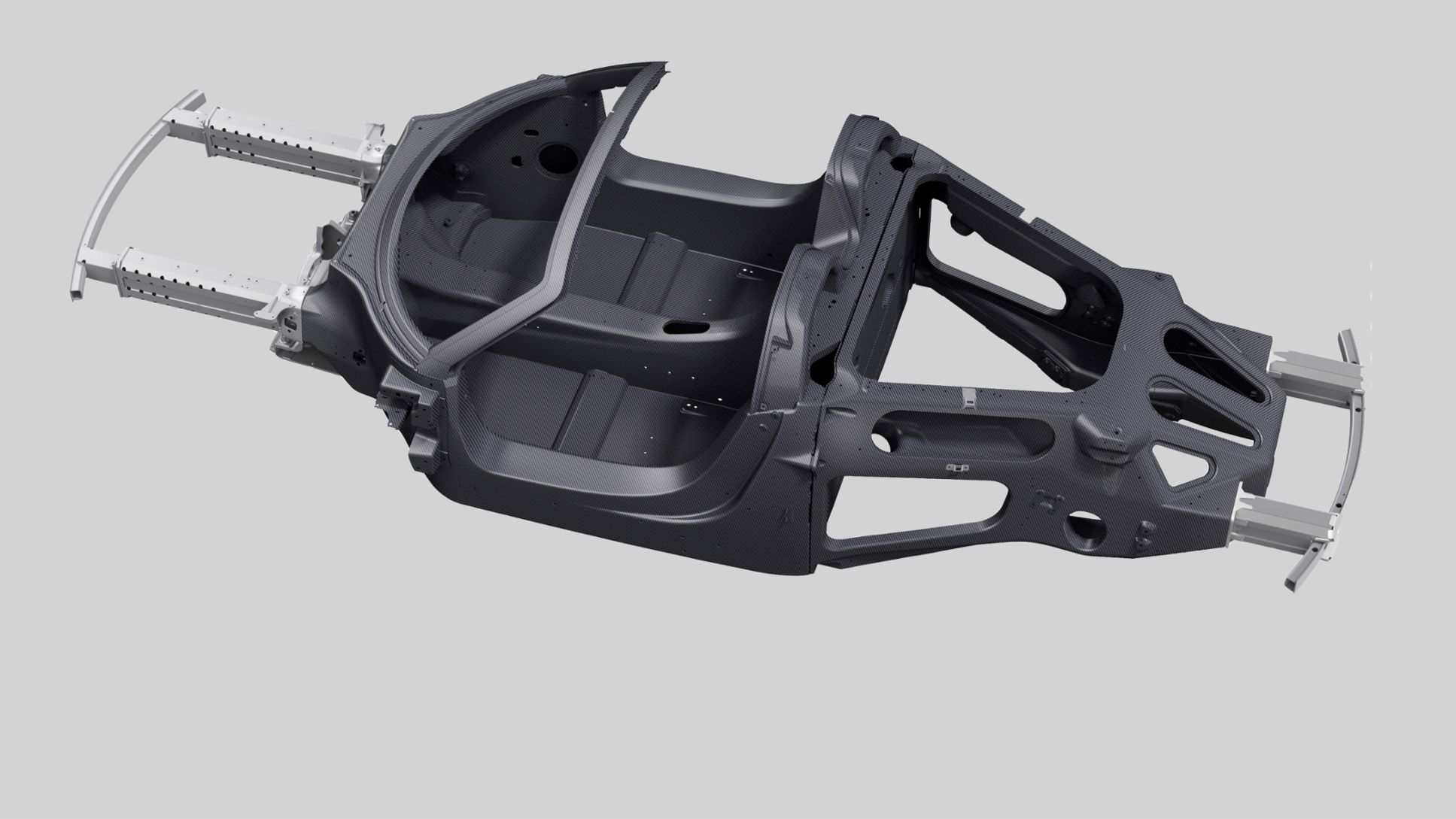In motorsport every gram counts. As much power, acceleration and safety as possible at the lowest weight – that is the motto in designing any race car. All the more if it is for the 24 Hours of Le Mans: each superfluous gram must be carried for more than 350 laps; the lost seconds add up into minutes over the race distance of around 5,000 kilometres – a world of difference. Since 2014, there has been yet another reason for weight reduction at Le Mans. New race regulations for efficiency forces teams to radically minimise the fuel consumption of their race cars. Each car may only consume a maximum of 5.04 litres of racing petrol per lap – a genuine challenge for the developers of the 919 Hybrid.
Lightweight and stable
In today's world, the weight and fuel consumption of street cars must increasingly be considered as well. By 2020, the average CO2 fleet vehicle emissions for each car manufacturer must amount to less than 95 grams per kilometre of driving – another big step.
Lightweight carbon fibre composites could make a contribution here. Nonetheless, carbon does not really lend itself to mass production in the automotive industry yet – despite its extremely high tensile strength, elasticity and heat conductivity – and a long development history. It all began in the 1870s with the American inventor Thomas Alva Edison.
Invention of carbon fibre
The vastly improved incandescent light bulb is arguably his most famous invention. A less well known fact is that this ingenious tinkerer also made the first carbon fibre. For the filament of his light bulb, Edison was looking for a material that combined electrical conductivity with flexibility and robustness. He was not satisfied until he had conducted extensive experiments of materials from around the globe – finally he settled on the fibres of a type of Japanese bamboo that he carbonised by heating it slowly. This basic principle for producing carbon fibre has remained the same to this day. The raw materials, which have a high concentration of carbon, are heated in a pyrolysis process until the only component that remains is the carbon material. The best fibres are produced from graphite, the form of carbon with the highest degree of structure. Its uniformity on the molecular level gives carbon fibres their high tensile strength and flexibility, enabling low weight and a small diameter. A human hair is around ten times thicker than these carbon fibres which are just five to nine microns thick.
Still, a lot of ground has been covered between Edison's incandescent filaments and the high-tech materials in the 919 Hybrid. The fibres themselves are continually being improved. While bamboo, cotton and wood were used as raw materials in the early days, technical development has moved on to pure cellulose and finally polyacrylnitrile – a polymer that is used to produce most carbon fibres today. As an alternative, the fibres can also be produced by the pyrolysis of pitch – a material by-product of petroleum oil distillation. But the fibres do not reach their full potential until they are combined with a matrix of polymers in which they are embedded.
Material for the aerospace industry
The use of CFRP was born in the aerospace industry. Starting in the 1950s, carbon fibres were woven into strips, soaked in resins and processed into very strong and lightweight molded parts. In the automotive industry, the fascinating material first appeared in the 1990s. At Porsche, carbon fibre made a fitting debut. In the 1998 race season, the 911 GT1 became the first Porsche to sport a carbon-fibre chassis. Designers saved a full 50 kilograms of weight compared to the previous model – and this promptly led to a magnificent first-second sweep at Le Mans. The street-car premiere of carbon fibre happened five years later – and it was reserved for an exceptional sports car: the Carrera GT.
But despite its excellent properties, carbon has not really revolutionised vehicle technology from the ground up. The once predicted triumph of carbon fibre has largely been restricted to the domain of super sports cars with smaller production volumes. The simple reason: the costs of CRFP parts are still very high compared to metal parts for the same production volumes. The production of carbon fibre itself is very energy- and cost-intensive; processing it into an end product requires significantly more complex, time intensive production processes with less automation compared to metal materials. The key to reducing manufacturing costs and thereby making CFRP feasible for large-scale production is to shorten production times with faster curing resins or thermoplastic matrix systems.
Porsche relies on an intelligent material mix – including carbon
The number of car models with carbon parts is growing at Porsche. In addition to the 919 Hybrid, the 911 GT3 RS street sports car trims several kilograms of vehicle weight by using CFRP to produce the boot lids, rear spoilers and wings. And the 918 Spyder puts a chassis on the road that is made entirely of carbon fibre and has a CFRP monocoque. However, for larger production volumes, the lightweight car body of the future will presumably require an intelligent, requirements-based material mix of aluminium and steel supplemented by parts made of magnesium and fibre-reinforced polymer materials such as CFRP. Intelligent hybrid construction methods in particular – which combine the benefits of metals and fibre-reinforced polymer composites – have high potential for economic lightweight design, especially at medium to large production volumes. This much is certain: Porsche will still be adding a number of new chapters to the history of carbon fibre.
Consumption data
911 GT3 RS: Combined fuel consumption 12.7 l/100 km; CO₂ emissions: 296 g/km

